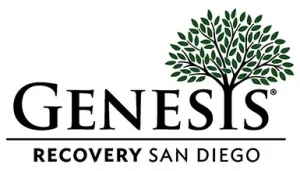Non-medical use and abuse of prescription drugs can lead to prescription drug addiction. Prescription drug abuse includes taking a medicine that was prescribed for someone else, taking a larger dose than instructed, taking the medicine a different way than instructed (e.g. snorting or injecting tablets), and using the medicine for purposes other than treatment, such as getting high. The three classes of most commonly abused prescription drugs are opioids usually prescribed to treat pain, central nervous system depressants used to treat anxiety and sleep disorders, and stimulants mostly prescribed to treat attention-deficit hyperactivity disorder (ADHD).
Results from a 2014 National Survey on Drug Use and Health revealed that about 15 million people ages 12 or older used prescription drugs non-medically in the past year. Prescription drug abuse-related emergency department visits and treatment admissions have skyrocketed. Furthermore, over 50 percent of people who misused prescription painkillers got them from a friend or relative for free, and over 22 percent got them from a doctor. Many abusers have admitted to “doctor shopping,” visiting several different providers to gain access to multiple prescriptions at the same time.
Prescription drug abuse, now a public health crisis, has severe consequences, including misuse and overdose as well as an increase in neonatal abstinence syndrome (NAS) incidents. While widespread media coverage tends to focus on overdoses and addiction, many fail to remember the epidemic has also affected children and infants. The number of delivering mothers using or dependent on opioid medication rose nearly five-fold from 2000 to 2009. Newborns with NAS are more likely to have low birth weight and respiratory complications than other babies. A 2012 study revealed that 21,732 babies were born with neonatal abstinence syndrome, also a five-fold increase since 2000. In 2015, statistics showed that one baby was born suffering from withdrawal every 25 minutes.
According to the National Institute on Drug Abuse (NIDA), more than 90 Americans die every day from opioid overdose, including prescription pain relievers. This national crisis began in the 1990s when pharmaceutical companies reassured the community that patients would not become addicted to opioid pain relievers, thereby enabling healthcare providers to prescribe more. These greater rates of prescribing led to the misuse and diversion of opioid medication and opioid overdose rates began to increase. The New York Times reported that more than 183,000 people died from overdoses due to prescription opioids in the 15 years leading up to 2015. “Pill mills” began popping up around the country as communities were flooded with prescription opioids. Opioid prescription pain relievers proved to be highly addictive. Up to 29 percent of patients who are prescribed opioids for chronic pain abuse them and up to 12 percent of those people develop an opioid use disorder. About 80 percent of people who use heroin first misused prescription opioids.
Prescription drug abuse and overdose is complex and can stem from inappropriate prescribing, insurance and pharmacy benefit policies, and a belief by many that prescription drugs are not dangerous. The U.S. Department of Health and Human Services (HHS) is working to advance better practices for pain management and provide support for new research on pain and addiction. The National Institutes of Health is similarly searching for safe, effective, non-addictive strategies to manage chronic pain by engaging in partnerships with pharmaceutical companies and academic research centers.
Several lawsuits have been filed against drug makers and distributors, but critics say this is only a chance for lawyers to make money and politicians to make headlines, not a solution to the crisis. Some critics even say that the lawsuits take the pressure off of public officials. Supporters of the litigation say that it could force good changes, such as adequate money to get all addicts into treatment and the development of education and prevention programs.
